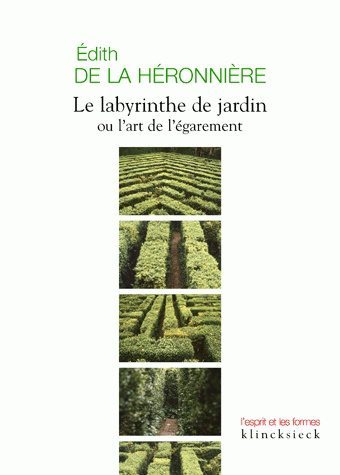For a long period of time, the Western labyrinth, integrated into the sacred space of the Church, represented the path to be followed on a pilgrimage to Jerusalem, as a symbolic shortcut for all who were not physically fit to travel to the Holy Land. At the end of the Middle Ages, after leaving the Church realm, it became an element of garden art during the Renaissance, particularly in Italy. As an area that causes physical anxiety, it would soon introduce a metaphysical component into garden architecture.
Although the garden labyrinth can be viewed as a game, it can also create a sense of unease reminiscent – in the collective unconscious – of the primeval forest: entering therein is not without risk and the game can easily become unsettling. It raises the question, why should such areas, surrounded as they are by beautiful gardens meant to be relaxing, be unsettling and, by extension, why have people always needed to lose their way in order to do a better job of finding themselves ?
This intent of this essay is to show how the labyrinthine form – which by nature tends to create anxiety – can be used as a medium for philosophical reflection, highlighting the important role of the game and of losing one's way along the path of the labyrinth, giving rise to a philosophy of – or in – the garden, of which Le Songe de Poliphile is the most beautiful example.
To date, essayist Édith de La Héronnière has published La Ballade des pèlerins (1993) with Mercure de France; Vézelay, l'esprit du lieu (2000) and Du volcan au chaos, Journal sicilien (2002) with Pygmalion; and Teilhard de Chardin, une mystique de la traversée (2003) and Joë Bousquet. Une vie à corps perdu (2006) with Albin Michel. She has also co-authored, with Polish writer Gustaw Herling, Entretien sur le Mal (Seuil, 1999). She has published with Klincksieck Dans les jardins de Sicile (2017).




